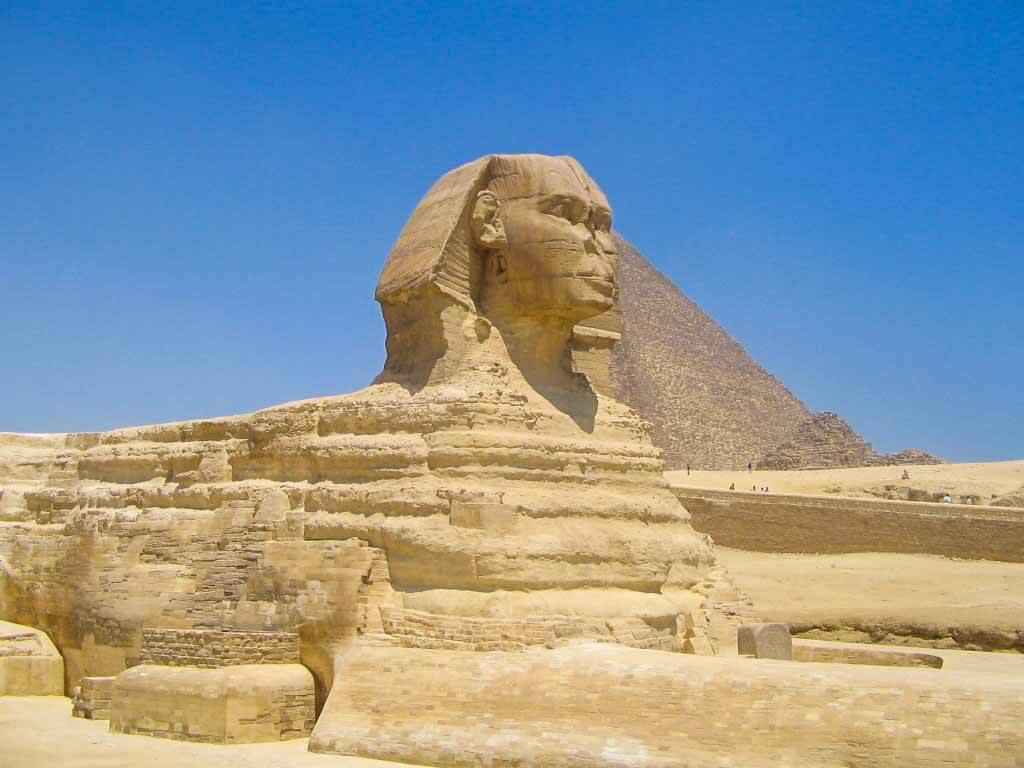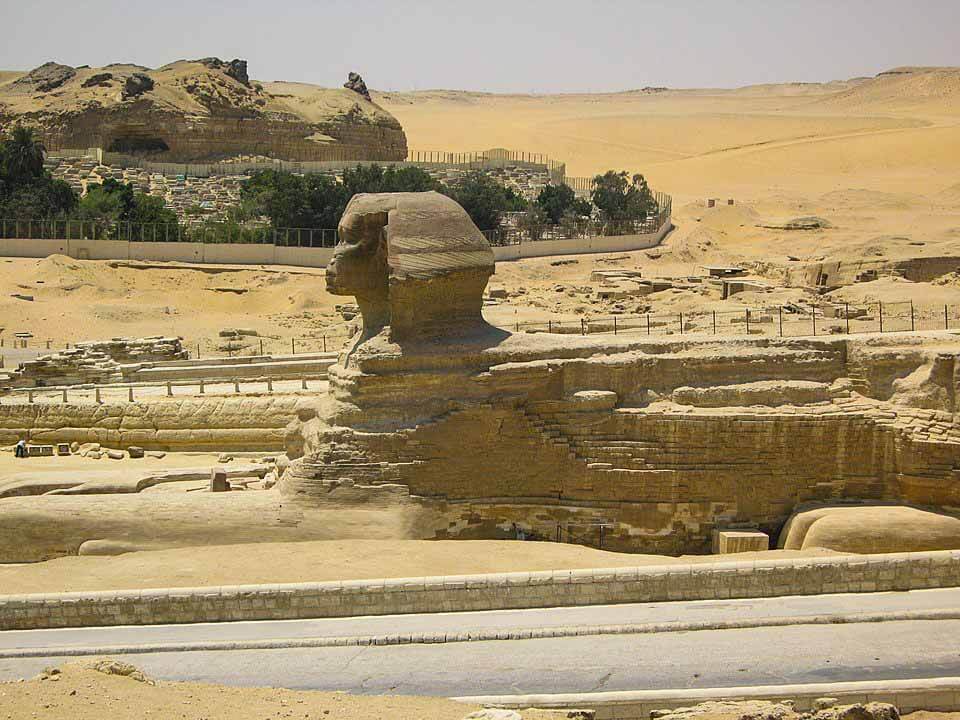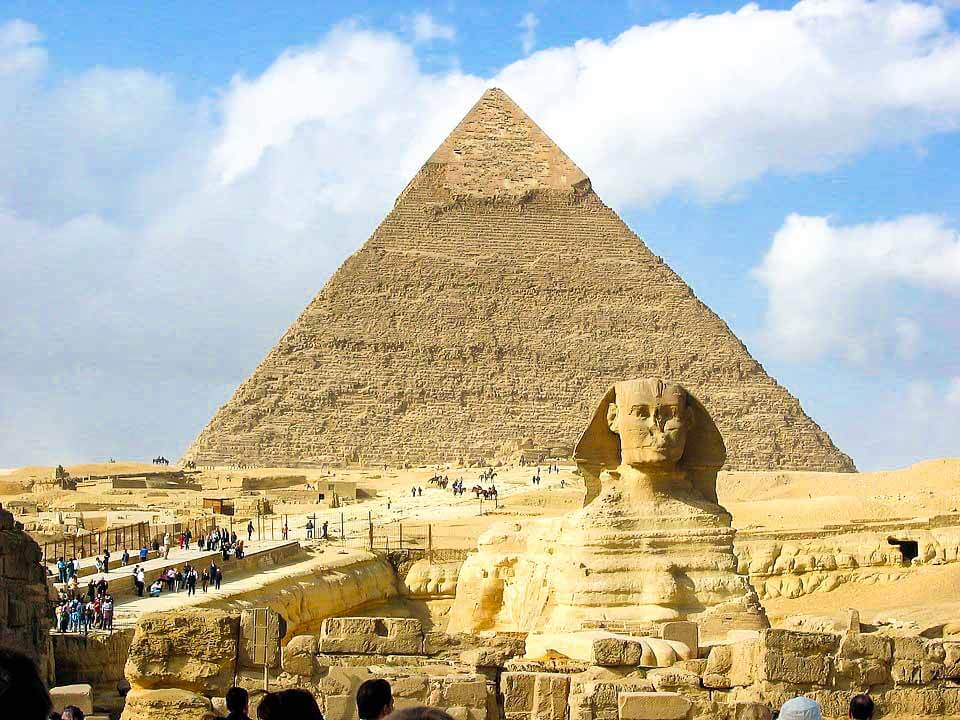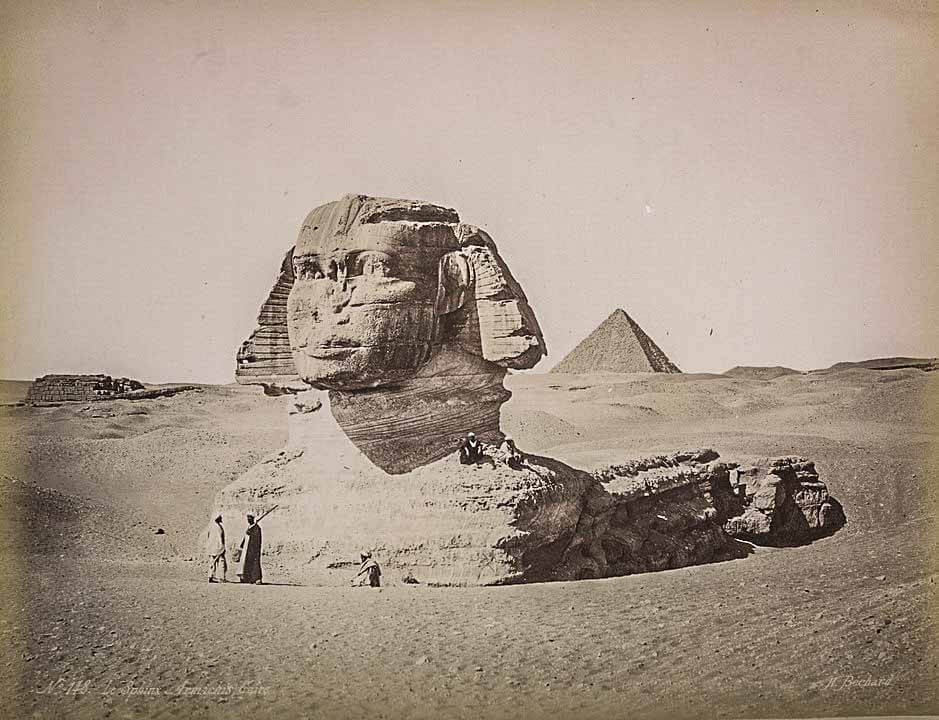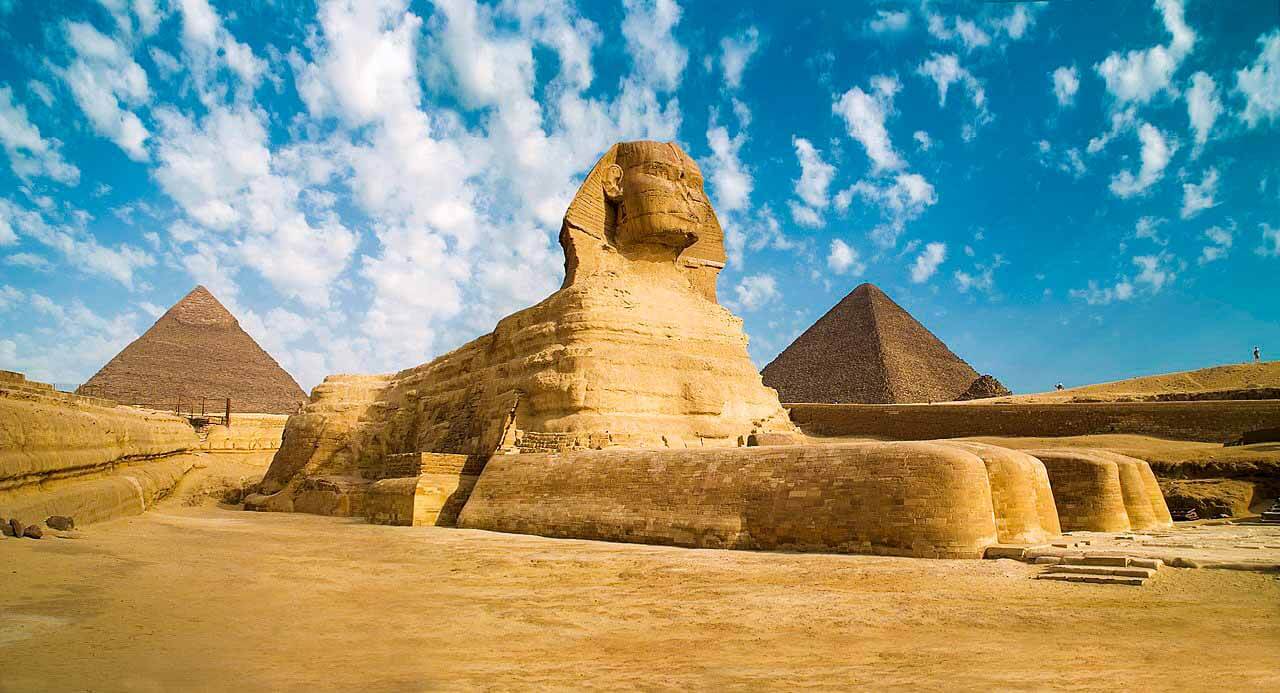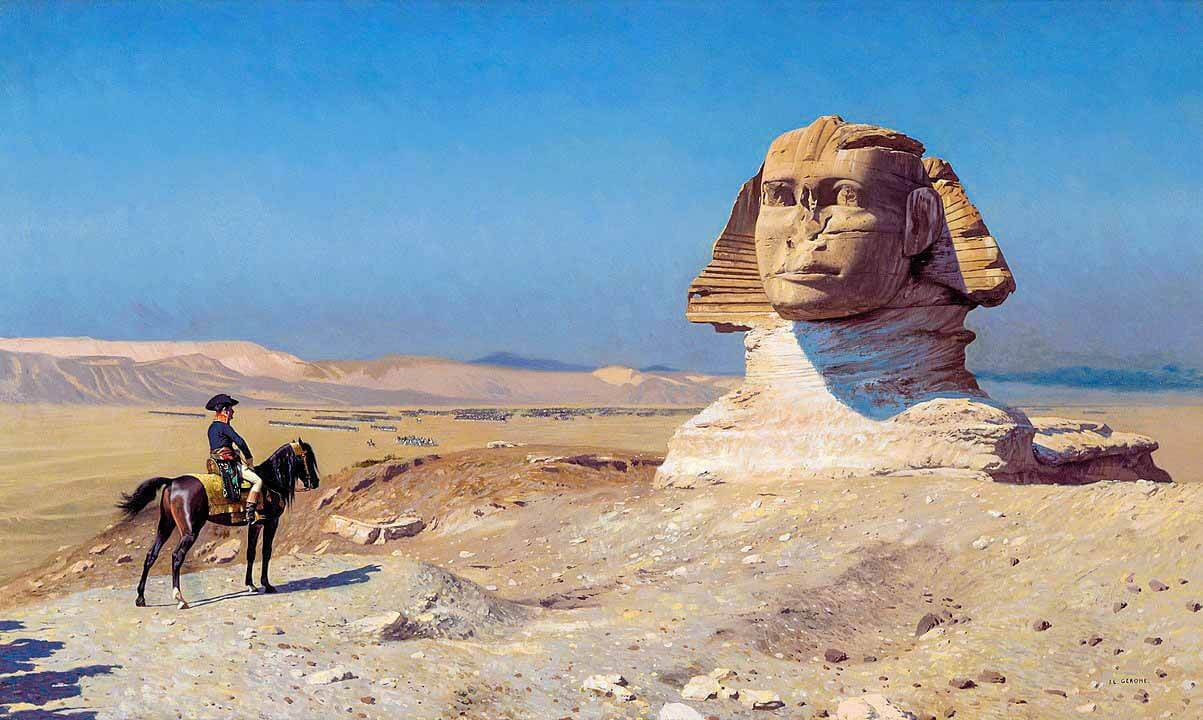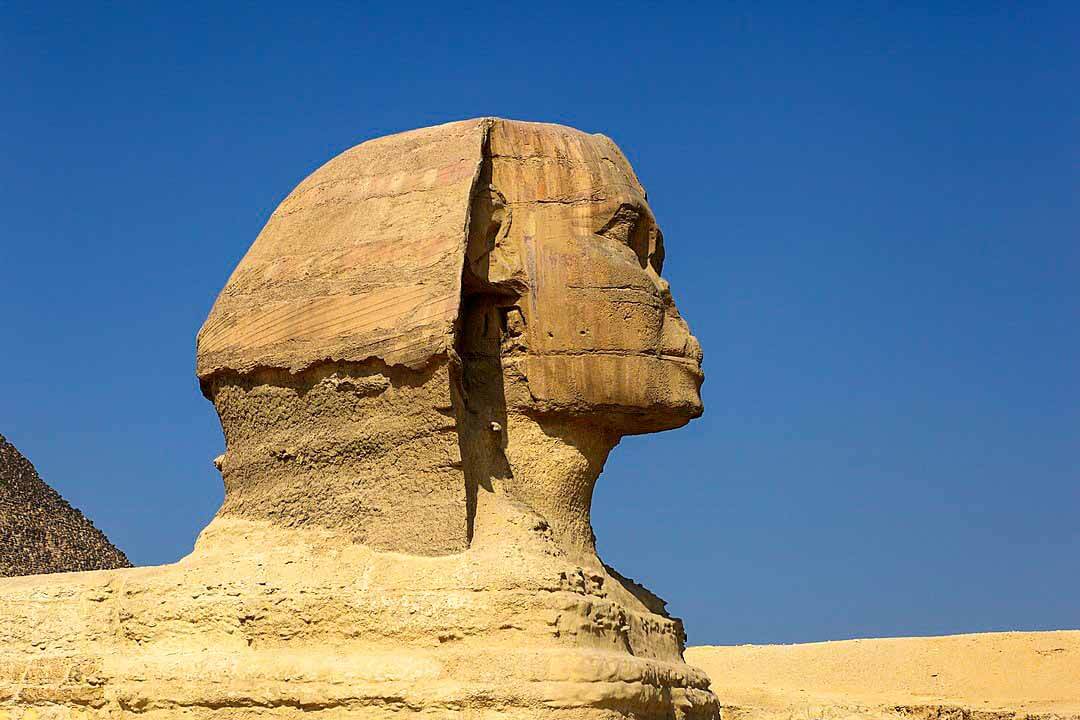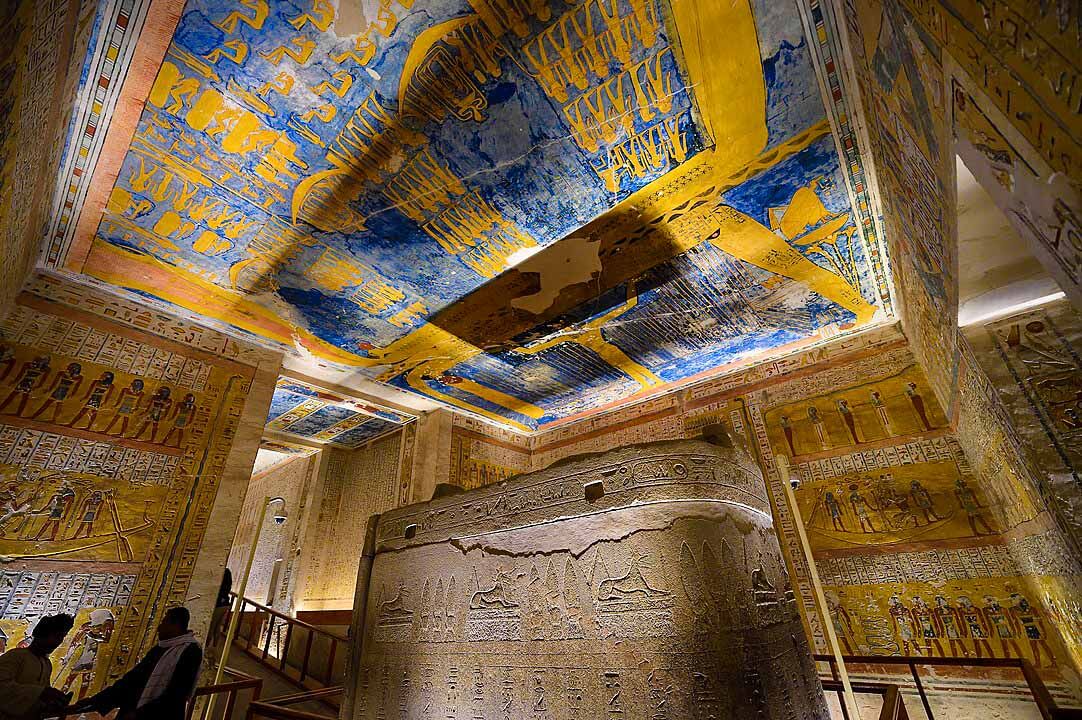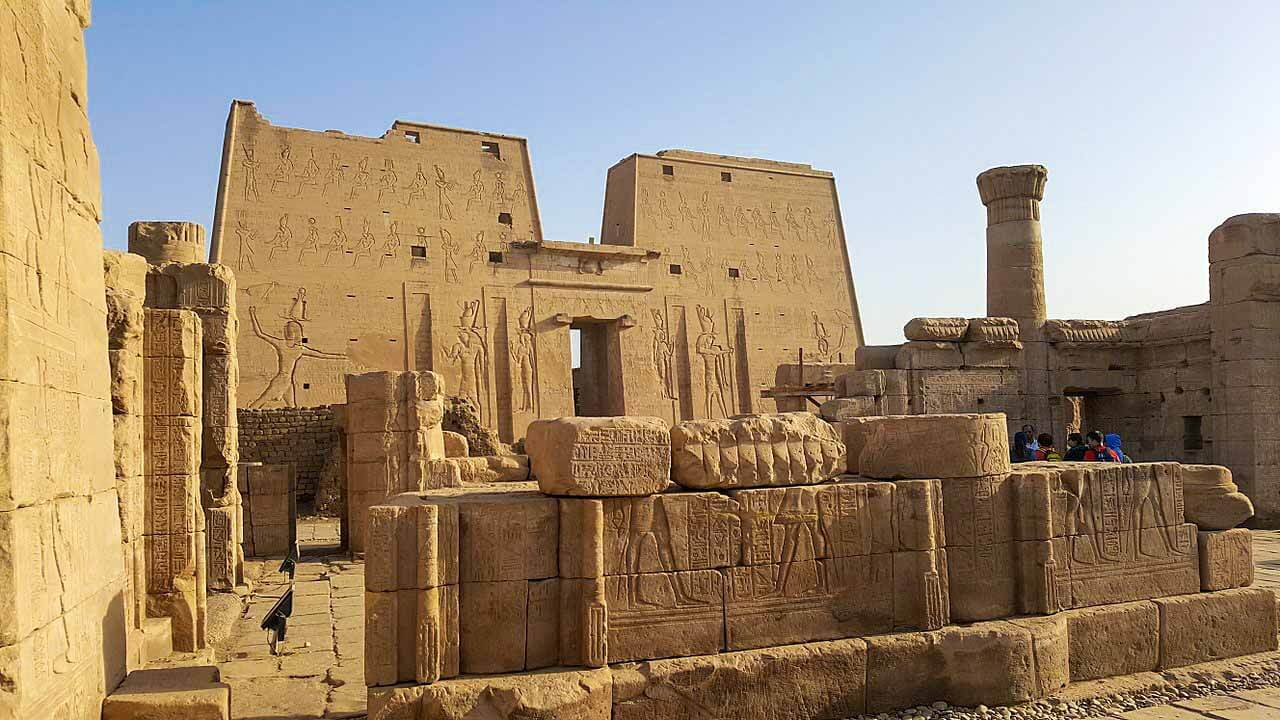Giza, Egypt
Coordinates: 29.975278, 31.137778
The Great Sphinx of Giza, commonly referred to as the Sphinx of Giza or just the Sphinx, is a limestone statue of a reclining sphinx, a mythical creature with the body of a lion and the head of a human.
Facing directly from West to East, it stands on the Giza Plateau on the west bank of the Nile in Giza, Egypt.
It’s not known exactly how old The Great Sphinx is, who built it, or for what purpose. Despite theories, it’s also not known what happened to the nose. Since this mythological creature with a lion’s body and human head sits in front of Khafre’s Pyramid, it’s generally believed the Sphinx is from the 4th dynasty around 2500 BC.
It is part of the 2nd pyramid complex at Giza and is right in front of where they do the light show at night. You can’t get up close to it like the great pyramids but you can get close enough.
Hall of Records
There is a long history of speculation about hidden chambers beneath the Sphinx, by esoteric figures such as H. Spencer Lewis. Edgar Cayce specifically predicted in the 1930s that a “Hall of Records”, containing knowledge from Atlantis, would be discovered under the Sphinx in 1998. His prediction fueled much of the fringe speculation that surrounded the Sphinx in the 1990s, which lost momentum when the hall was not found when predicted.
Know This
Later in the day, the lines gets longer, so come early if you want to take some good photographs.


